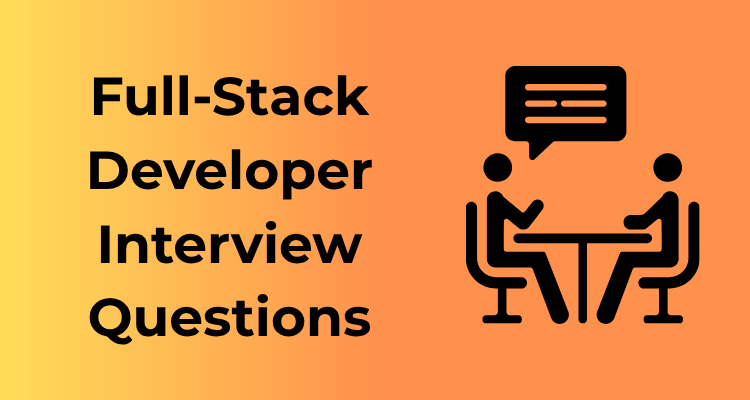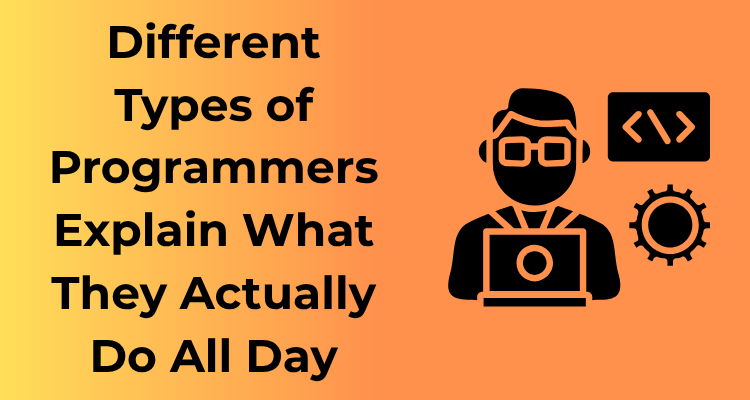Behind every app that doesn’t crash with each click, every piece of software that’s intuitive to use, and every website that doesn’t freeze, there’s likely a QA engineer working their magic. So, who exactly is this unsung hero, and what makes them tick? Let’s dive into what defines a QA engineer and why they are truly the backbone of software quality.
What is a QA Engineer?
A QA (Quality Assurance) engineer is essentially a gatekeeper of quality. Their primary role is to ensure that software products whether it’s a mobile app, a website, or enterprise software function as they’re intended to. Think of them as the people who examine every seam, every corner, and every function of a product to ensure it meets both technical requirements and user expectations.
If errors (commonly called bugs) slip through to the end user, it not only frustrates customers but can also hurt a company’s reputation in the long term. QA engineers are the invisible warriors who prevent this from happening!
Not Just “Testers”
It’s tempting to box QA engineers as mere “testers,” but their responsibilities go far beyond just running tests. Sure, testing is a big part of the job, but QA professionals are problem-solvers, detectives, and advocates for users. They ensure the “big picture” of quality aligns with the product’s goals.
- Detectives: QA engineers investigate software to uncover sneaky bugs or inconsistencies in behavior. They pose “What if?” scenarios no one else thought of.
- Problem-solvers: When issues are detected, QA engineers dive deep into understanding why they happened. This might involve working closely with developers or analyzing data from testing tools.
- Advocates for the user: QA engineers don’t just look at the code—they put themselves in the shoes of the end user. They think about accessibility, ease of use, and if the user experience is intuitive and satisfying.
Why QA Engineers Matter More Than Ever in the Tech World
The complexity of modern software has skyrocketed. Think about all the apps we juggle daily: messaging apps, streaming services, online shopping each seamlessly woven into our lives. A tiny issue in any of these could frustrate millions, if not billions, of users. With high stakes like this, having a meticulous QA engineer on the team isn’t just an option; it’s a necessity.
Businesses now operate in a world where software excellence is a competitive advantage. A flawless user experience can be the difference between an app that people rave about and one that they uninstall in seconds. QA engineers, therefore, hold immense power in shaping a product’s reputation right from the development stage.
Key Roles Beyond Just Testing in a QA Engineer’s Job
When you think of a QA (Quality Assurance) Engineer, the first thing that likely comes to mind is testing. Yes, testing is indeed a big part of the QA world—but that’s not the whole story! QA Engineers wear many hats, and their responsibilities go well beyond simply catching bugs. Let’s dive into what makes their role both dynamic and indispensable in software development.

1. Ensuring Process Compliance
QA Engineers don’t just test; they also act as the guardians of process integrity. They map out quality standards and ensure that every stage of development—from concept to deployment—follows the guidelines. This means defining workflows, monitoring adherence to methodologies (like Agile or Scrum), and ensuring that teams are doing things the right way to deliver robust software.
2. Risk Management
One of the most underrated roles of a QA Engineer is risk analysis. They assess potential vulnerabilities in the software and predict what could go wrong. By identifying risks early, QA Engineers don’t just put out fires—they prevent them altogether. Have you ever used an app that crashed when too many people logged in? Thank a great QA Engineer when that doesn’t happen next time!
3. Designing Efficient Test Strategies
Testing isn’t just random clicking and hoping for results—QA Engineers meticulously design strategies tailored to various testing requirements. This includes unit testing, functional testing, and even stress testing software to make sure it performs well under extreme situations. The goal isn’t just finding bugs but ensuring the product can handle real-world user behavior.
4. Playing Detective with Root Cause Analysis
When systems fail or bugs surface, QA Engineers don’t stop at noting the issue—they channel their inner Sherlock Holmes to perform a root cause analysis. By identifying why a problem occurs, they can suggest fixes that solve the issue systematically rather than just patching up symptoms. It’s like addressing the disease, not just the fever.
5. Advocating for the User
At their core, QA Engineers are champions of the end-user experience. They take off their technical hats and think like users navigating the app. By doing this, they ensure products are intuitive, accessible, and delightful to use. A QA Engineer asking, “Will this confuse the user?” is an everyday reality—and it’s why people love their smooth, glitch-free software adventures.
6. Collaboration and Team Enablement
QA Engineers don’t exist in silos. They work closely with developers, designers, and even stakeholders to create a collaborative environment. By sharing insights and feedback, they help other team members make informed decisions, thereby contributing to the software’s overall success. It’s teamwork at its finest—and QA Engineers often serve as the glue that holds it all together.
Breaking Down the Common Tools in a QA Engineer’s Toolkit
Hello there! Ever wondered what a QA engineer uses to call themselves a digital problem-solving wizard (*hint: they kinda are*)? Let’s delve into the array of tools and technologies available to QA engineers that make their job analytical, effective, and yes, pretty cool. Think of their toolkit like Batman’s utility belt, individually crafted to tackle a range of challenges… except, y’know, for software rather than Gotham’s villains. Intrigued? Let’s explore!
Automation Testing Tools
Automation testing is one of the most effective ways QA engineers ensure software is functioning as intended without spending hours on repetitive manual tasks. Imagine running thousands of checks in seconds—talk about a productivity boost! Here are a few superstars from this category:
- Selenium: Popular for web app testing, Selenium is the cape-wearing hero of automation. It works beautifully across different browsers and operating systems.
- Testim: Utilizing AI, Testim makes it easy to create, execute, and maintain tests. Bonus points for making you look even more like a genius.
- Cypress: Known for its speed and developer-friendliness, this tool is perfect for end-to-end testing of modern applications.
Automation is like having a trusty assistant that never sleeps—it not only makes testing faster but also helps QA engineers achieve consistent results every time.
Bug Tracking Tools
Spotting a bug is one thing. Tracking it to resolution is quite another. QA engineers rely heavily on bug tracking tools to ensure pesky issues don’t fall through the cracks like lost socks in the laundry:
- JIRA: A powerhouse for project and bug tracking, JIRA enables seamless collaboration between teams.
- Bugzilla: This tool is efficient and allows you to manage your software testing with stellar bug tracking finesse.
- Redmine: A bit more tech-savvy, Redmine works for QA teams who prefer an open-source option with robust customization capabilities.
In QA, tracking is the name of the game. Addressing issues in a methodical way ensures continuous improvement for the software.
Performance Testing Tools
You wouldn’t buy a car without testing its top speed, would you? Similarly, performance tools help simulate how software behaves under various loads or stress. They ensure users don’t have an epic fail moment during peak traffic.
- Apache JMeter: This tool tests the performance of both static and dynamic web applications.
- New Relic: Not just a testing tool, it also monitors live apps to spot performance bottlenecks in real time.
- Gatling: With its easy-to-read reports, Gatling helps QA engineers identify performance issues quickly.
These tools essentially answer the critical question: “Can the application handle the bustling crowd when it goes viral?”
Collaboration and Communication Tools
A QA engineer often works in tandem with developers, product teams, and project managers. This makes collaboration key. Here are a couple of tools they love:
- Slack: For real-time messaging and file exchange, Slack is a favorite. You could even integrate bug tracking tools here for seamless updates.
- Trello: Many QA teams use Trello boards to organize tasks and keep workflows smooth.
As the saying goes, “Teamwork makes the dream work,” and seamless communication tools are often the unsung heroes of QA success stories.
How Does a QA Engineer Work Alongside Developers?
Imagine a bustling tech environment where people with diverse skillsets come together to craft a spectacular end product. This synchronization is the essence of how QA engineers work alongside developers. In fact, this collaboration is less like a “you against me” scenario and more like a friendly, supportive game of doubles tennis. Both players are aiming for the same goal—to win by delivering the best possible software. But how does this teamwork happen in practice? Let’s break it down.
1. Partners in Problem-Solving
A QA engineer is developers’ best ally in finding and fixing issues before they escalate. The process kicks off during the planning phase where QA engineers might collaborate with developers to review requirements, user stories, or specifications. By identifying potential risks and gray areas early, they can prevent costly surprises later. Think of them as the “prevention squad.”
When the development phase begins, QA engineers are hot on the trail—testing, probing, and analyzing the code. Their hands-on involvement means they often detect bugs that developers might overlook while immersed in the intricate web of programming. Rather than pointing fingers, this partnership is about tactfully sharing feedback to make the product shine.
2. Bridging the Gap
QA engineers bridge the gap between technical and user perspectives. Developers tend to immerse themselves in “how the code works,” whereas QA engineers focus on “what the users will experience.” A QA engineer ensures that developers’ creations don’t just work logically but also feel intuitive to users. Essentially, it’s the perfect balance of logic and empathy!
For instance, if a developer creates a feature that technically performs well but is confusing or inconsistent when used, the QA engineer will outline these issues. This ensures that both teams are thinking beyond “just working” to creating software that’s delightful to use.
3. Continuous Feedback and Iteration
Here’s a fun fact: agile development methodologies thrive on collaboration between QA engineers and developers. With quick sprints, regular scrum meetings, and frequent releases, there’s a constant back-and-forth. QA engineers may provide actionable feedback daily, keeping developers informed about the state of the product.
Why Communication is Crucial for a Successful QA Process
Let’s face it—great communication can make or break a team. This is especially true when it comes to the QA process in a software development cycle. Quality Assurance Engineers don’t just sit in a corner, clicking buttons and searching for bugs. Instead, they function as a critical bridge between developers, project managers, designers, and ultimately, the end-users. A strong QA process starts and ends with clear, effective communication. Here’s why it’s so important.

1. A Clear Understanding of Expectations
At the beginning of any project, everyone needs to agree on what “quality” means for a given product. Good communication ensures that QA engineers know exactly what features are top priority, who the end users are, and what standards must be met. Misunderstandings here can lead to a chaotic QA process and, worse, a disappointing product launch. When goals are communicated well, however, QA engineers can focus on what truly matters.
Tip: Use tools like detailed requirement documents or user stories and discuss them thoroughly with the team. Don’t just skim the surface—ask questions and confirm your understanding!
2. Catching Issues Early
Communication isn’t just about talking; it’s about listening, too. QA engineers can’t afford to work in silos, especially when spotting potential pitfalls early in development. By keeping an open dialogue with developers, a QA engineer can flag potential bottlenecks, clarify tricky requirements, or address confusing functionality before they even become an issue.
- Scenario: A QA engineer notices recurring bugs in a feature that the dev team is struggling with. By initiating a timely conversation, solutions can be brainstormed and implemented early—saving heaps of time.
This kind of proactive communication ensures that small problems don’t snowball into full-blown blockers.
3. Building Trust and Collaboration
There’s sometimes a misconception that QA engineers are adversaries to developers, constantly pointing out flaws. But in reality, they’re all on the same side—working toward a shared goal of delivering the best possible product. Open and honest communication fosters trust between these teams.
By being transparent about findings, limitations, and questions, QA engineers can smooth over any “us versus them” mentality. Developers are more likely to be receptive to feedback if it’s delivered constructively, rather than being viewed as harsh criticism.
4. Efficient Bug Reporting
Once bugs are identified, a QA engineer’s ability to communicate them clearly can significantly streamline the development process. A well-written bug report is a gem—it includes clear reproduction steps, screenshots or videos, and notes on how the bug impacts functionality or the user experience. Without this, bugs might get ignored or prioritized incorrectly.
Pro Tip: Avoid too much jargon and stick to concise, actionable descriptions developers can quickly understand.
5. Championing User Advocacy
Lastly, one of the most crucial aspects of a QA engineer’s role is representing the end-user. This is where excellent communication skills truly shine. As user advocates, QA engineers translate technical concerns into human-impact terms during team discussions. For example, they might explain how a specific bug could cause frustration or confusion for a user, helping stakeholders make better decisions.
Examples of Real-World Scenarios When QA Engineers Save the Day
Ever wondered why QA engineers are considered the unsung heroes of the tech world? Let’s talk about real-life stories where QA engineers didn’t just find “bugs,” they prevented catastrophes! Trust me, these examples will make you appreciate their role even more.
1. Preventing a Customer Data Breach
Imagine this: a company is about to roll out a major update to their e-commerce platform, and everyone is ecstatic. Orders will be processed faster, customers will have new features, and it’s all sunshine and rainbows—until the QA team discovers a security vulnerability with customer profiles. This flaw would have allowed unauthorized access to sensitive order history and payment information!
The QA engineers acted swiftly, halting the deployment and collaborating with developers to patch the issue. Without their intervention, the company could have faced massive lawsuits and irreparable damage to its reputation. In this scenario, QA wasn’t just about testing functionality—it was about safeguarding trust.
2. Good-Bye to the “Infinite Loading Screen” Dilemma
We’ve all been there: waiting endlessly while the dreaded spinning wheel or “loading…” message doesn’t go away. Well, QA engineers have been heroes when it comes to solving these annoyances. One memorable case happened at a social media company where a new feature was being tested. The functionality seemed fine during initial developer tests, but the QA team identified a specific edge case where users with slower internet speeds were stuck on a loading screen forever. Yikes!
By identifying and recreating the issue, QA engineers ensured that developers optimized the app’s backend to handle slower networks. The result? Fewer customer complaints and a smoother user experience.
3. Keeping Holiday Seasons Happy
Retailers are very familiar with “Black Friday nightmares.” Imagine an online store’s shopping cart page crashing at the worst possible time—during the biggest sale of the year. Luckily, in one such case, QA engineers performed rigorous load testing weeks in advance. They identified that the server configuration wasn’t capable of handling the expected spike in user traffic.
Thanks to the team’s foresight, the server setup was scaled up, and the sale went off without a hitch. Customers got their deals, and the company reaped profits, all because the QA team prepared for the worst but delivered the best.
4. Catching “Comma Catastrophes” in Financial Systems
When it comes to financial applications, accuracy isn’t optional—it’s critical. In one fascinating real-world example, a QA engineer caught a decimal error in calculations during testing. Essentially, the system was about to overcharge users by 100 times due to how it handled commas versus decimal points in different regions (e.g., $1,000.00 vs $1.000,00). It may sound minor, but in finance, that’s an alarming problem!
This single catch saved the company from issuing refunds, repaying penalties, and losing customer faith.
5. Avoiding Cultural Faux Pas in Localization
Global companies know that launching a product internationally isn’t just about translation. QA engineers specializing in localization testing uncovered some interesting cultural missteps. For example, a food delivery app was about to launch feature names that were offensive slang in one target market. Whoops!
Thankfully, these careful testers flagged the issue and suggested culturally appropriate replacements. Crisis avoided, and the company impressed their new audience with thoughtful localization.
The Future of QA Engineering: Trends and Expectations
Have you ever wondered where the world of QA engineering is headed? It’s no secret that technology evolves at lightning speed, and so does the role of a QA Engineer. Whether you’re considering a career in quality assurance, or you’re just curious about how the field is shaping up, let’s dive into some exciting trends and expectations for the future.
1. The Rise of Artificial Intelligence and Machine Learning
AI and Machine Learning (ML) seem to be touching every corner of technology these days, and quality assurance is no exception. In the years ahead, QA Engineers will heavily leverage AI-powered tools to enhance testing processes. Imagine automated systems analyzing data to predict potential bugs even before code hits production. By adopting AI and ML, QA professionals can save significant time and focus on more complex tasks requiring human reasoning.
2. Automation is Taking Over, But Manual Testing is Here to Stay
Yes, automation is the buzzword! There’s no denying that tools like Selenium, Cypress, and TestComplete have already revolutionized automation testing. However, this doesn’t mean manual testing is obsolete. Testing user experience, creative workflows, and edge cases will always require a human touch. Moving forward, the trick will be to strike the perfect balance between automation and manual testing.
3. Increased Focus on DevOps and Continuous Testing
Enterprises are rapidly adopting DevOps methodologies, which emphasizes collaboration between developers and operations teams. QA Engineers play a crucial role in this by ensuring Continuous Testing throughout the software development lifecycle. Future QA roles will require even deeper integration with DevOps pipelines, making tools like Jenkins, Docker, and Kubernetes not just nice-to-know but must-know skills.
4. Shift-Left Testing: Finding Issues Earlier
Quality is no longer something to check at the very end of the software development process. Today’s mantra is “shift-left testing,” which means beginning quality assurance as soon as coding starts. By embedding QA early in the development cycle, companies can detect issues sooner, reducing costs and risks significantly. For aspiring QA Engineers, this is a reminder to stay knowledgeable about the entire product lifecycle!
5. Expanding Into Cybersecurity
With cybersecurity threats growing daily, QA moves beyond traditional function testing to test security protocols too. From simulated cyberattacks to vulnerability scans, QA Engineers with expertise in security testing will be highly sought after. Wouldn’t it be exciting to be the gatekeeper of not just quality but also safety for your organization’s software?
6. Soft Skills Will Be More Valuable
What does the future really need from QA Engineers? More than just tech knowledge, soft skills such as problem-solving, adaptability, and outstanding communication will set you apart. Think of QA Engineers as the glue that holds different parts of a team together, ensuring collaboration and seamless execution. Constant evolution in soft skills will be just as important as staying updated on technical know-how.
7. The Gig Economy for QA Professionals
With remote work becoming the standard, expect to see more freelance opportunities for QA Engineers. Many companies are looking to onboard expert testers on a project basis rather than maintaining large in-house QA teams. This “gigification” creates immense flexibility for QA pros while empowering businesses to access global talent pools.









